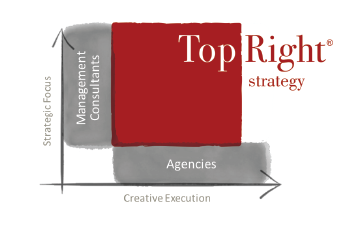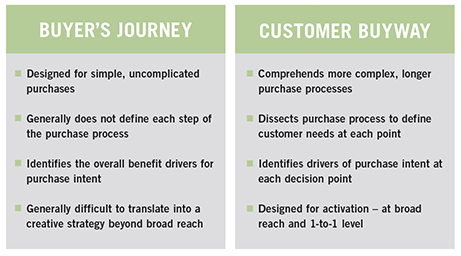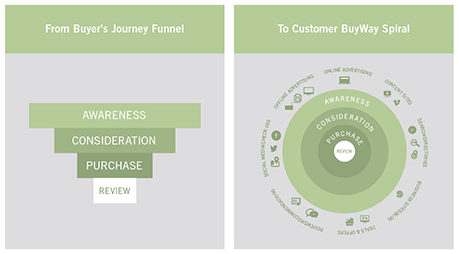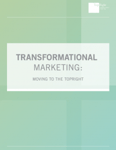If a tree falls in the forest and no one is around to hear it, does it make a sound?
Not to open up a philosophical debate, but it is an interesting thought experiment for marketers to consider: If you tell a great brand story and no one is around to hear it, does it make a difference?
What if you tell a great brand story, but it’s to the wrong people, or at the wrong time or in the wrong place? Do you make a difference?
A great brand story boils down the essence of why your brand should matter to people. It gives them a reason to care, a reason to buy, and a reason to stay.
Ideally, it compels them to respond on an emotional level.
But, what if that story never gets in front of the right people? What if it gets to the right people, but at the wrong time? Or through the wrong channel? What happens?
Okay, so this is not a perfect analogy, but most marketers would agree that if you start a campaign to tell your brand story without a clearly defined strategy that targets the right audience and aligns with measurable business objectives, you’re not going to make a significant impact.
“Story without Strategy is Art; Story with Strategy is Marketing“
Once you have created a compelling Brand Story, you need a Strategy to ensure it reaches your customers – in formats that they consume and through channels that they use, across every touchpoint.
At the center of your Brand Story and Brand Strategy is the customer, and it is your responsibility to understand their wants, needs, and desires to mold their journey and engagement with your brand.

TopRight Strategy:
Once you have your story, you need to make sure it reaches your customers – in formats that they consume and through channels that they use, across every touchpoint.
The Customer BuyWay
In order to create a profitable customer experience that is truly remarkable you need a framework for understanding the customer’s journey, how different segments of customers transit that journey, what their preferences are along the way, and how to adjust your tactics in real-time based on insights derived from actual customer behavior. At TopRight, we refer to this as the Customer BuyWay.
The Customer BuyWay leverages both qualitative as well as quantitative research to develop a comprehensive understanding of the infinitely more complex, non-linear, multichannel, multi-device purchase process that is today’s customer lifecycle.
Unlike the popularized “Buyer’s Journey,” the Customer BuyWay doesn’t end at the purchase stage, but rather encompasses the entire customer lifecycle: from the first visit to your website to meeting with a salesperson to contacting customer service to renewing a contract to advocating for your brand.

The best marketing masters the Customer BuyWay by bringing the right message to each customer touchpoint at the right time.
“By definition, remarkable things get remarked upon”
– Seth Godin
Customer Insights Power the Customer BuyWay
Step one is to identify and define your target customers. This involves a segmentation of your target audience and the creation of ideal customer “profiles”. These profiles, or buyer personas, are based not only on customer and internal stakeholder interviews but also quantitative survey data and customer behavioral analytics.
Key questions to ask during customer interviews might include:
- What are your core challenges and desired outcomes?
- Who, by role, has this need, challenge, desired outcome?
- Where do you go, both online as well as offline, for news, information, and insights?
- When do you engage, either via marketing or sales call?
- How do you make decisions about purchasing products/services?
- Why would you choose our brand versus our competitor’s brand?
Remember, this is only the first step.
Why not rely solely on this information alone? Interview and survey data can be imperfect. Employees and customers’ mood and attention can play a factor or they may tell you what they think you want to hear.
The one thing that your customers or prospective customers can’t hide is their behavior. So collecting and analyzing customer data across the organization, from tracking online engagement to what they purchase to how often they seek support, will arm you with the insights needed to define specific customer segments that will demand very specific marketing approaches and responses across the BuyWay.
Segmenting by behavior allows you to create dynamic segments based on, not what we think they do, but what they actually do, mapped to their personas.
Navigating the Customer BuyWay
The path to purchase, repeat purchase, and advocacy is no longer a direct route down the traditional sales funnel. It is now more like a spiral. Customers see, and engage with, many different types of content and messages at every stage and each interaction impacts the total result, for example:
- Social “likes” and reviews are factored into search rank
- Brand advertising increases click-through rates on search
- Bylined articles in targeted publications drive thought leadership and brand awareness
- Reviews increase confidence and influences organic search
- Blogging attracts more website visitors

During the Awareness stage, customers are beginning to form opinions about their needs and considering what we refer to here as “Cost of Entry benefits”: How can my problem be solved? What kind of outcomes do I need or expect? Should I even include your brand in my consideration set?
In the Consideration stage, customers have a better understanding of their specific needs and they are seeking to understand the “Differentiating benefits” of your brand: What makes you different from your competitors? What makes you different from the status quo?
And in the Decision stage, customers are judging their alternatives and the “Preference benefits” that help your brand come to the top of their short list: What’s the difference in cost? How long will it take to get results? What are your customers saying about you?
In the Post-Sale “Advocate and Repeat” stage, customers seek not just satisfaction, but innovation, communication, and support: What are the latest service and product updates? Are my questions being answered? What do I need to know to stay ahead of industry trends and best practices?
Summary
Each stage in your Customer BuyWay requires getting the right person, the right message, at the right time.
Little is more frustrating to customers than going to a vendor after spending countless hours doing research only to find themselves in an introductory conversation. According to CEB, buyers are 57 percent of the way through their purchase process before they even reach out to a vendor.
These frustrations are caused by a lack of Strategy and insight into the behavior of prospective customers.
 In order to be truly Transformational, you must establish a clear Strategy to tell a simple, clear and aligned Story to the right person, at the right time, through the proper channel.
In order to be truly Transformational, you must establish a clear Strategy to tell a simple, clear and aligned Story to the right person, at the right time, through the proper channel.
To learn more about how you can bring simplicity, clarity, and alignment to your brand’s Story, Strategy, and Systems check out our latest ebook: Transformational Marketing: Moving to the TopRight.

 “/>
“/>